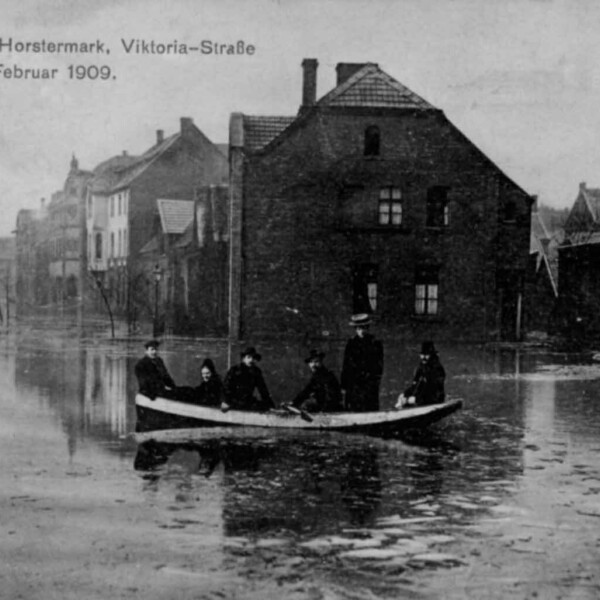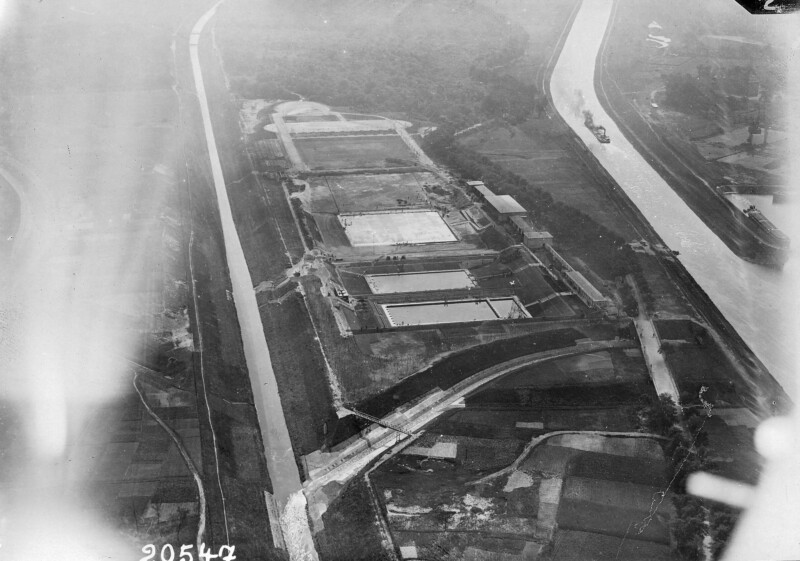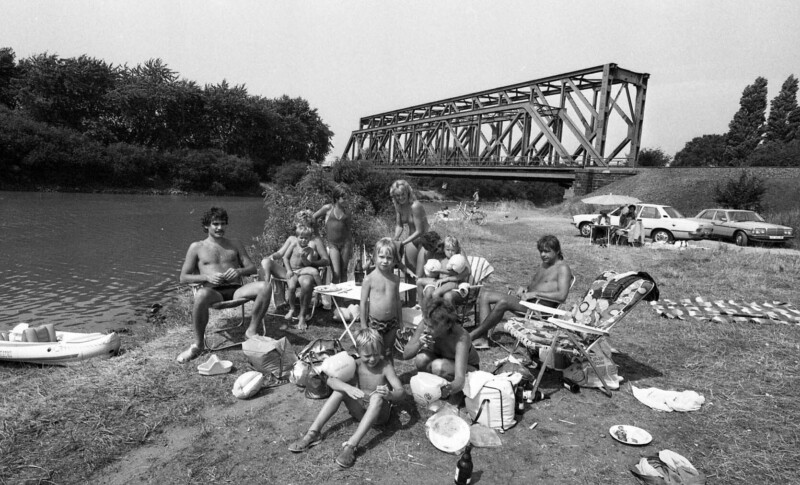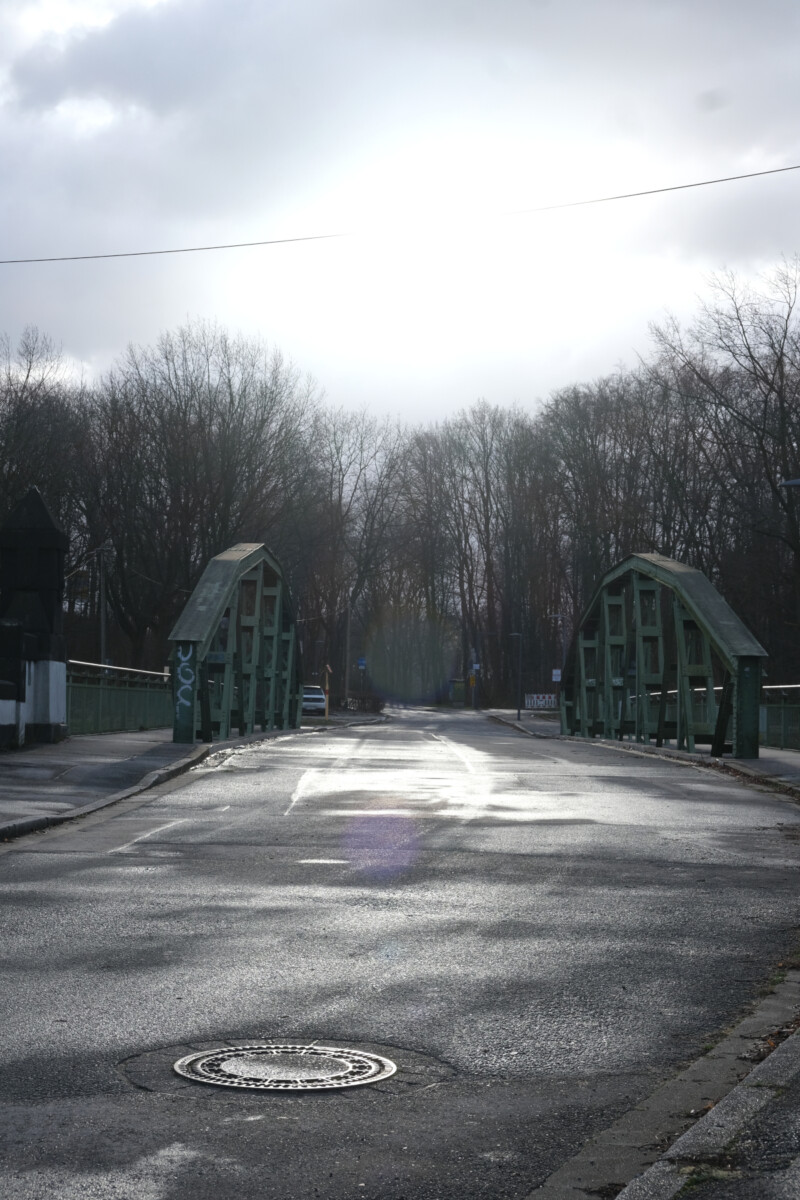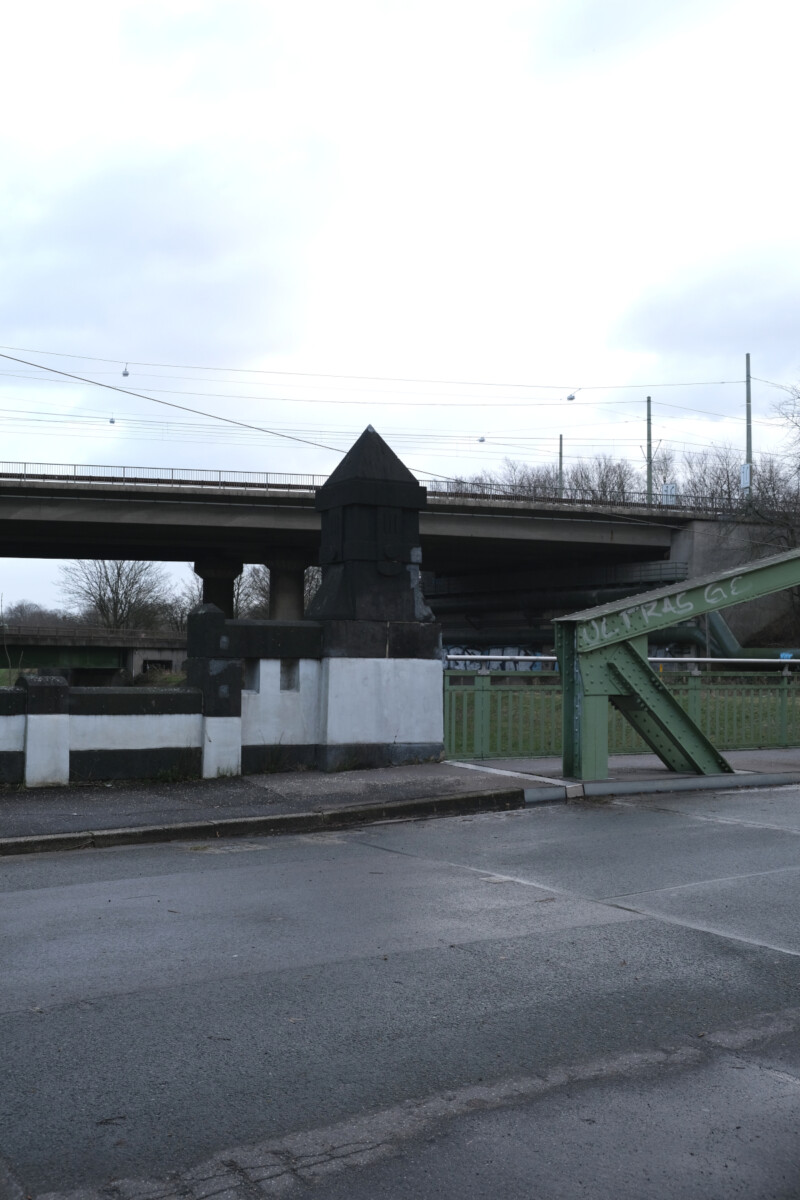Sutum Bridge


Death rises quietly over the banks
Will they make it to Consolidation Colliery 1/6 in time for their shift? Or will the stretch of land between Schalke and the village of Buer be under water again? In 1863 - the year the Consolidation Colliery was founded - the Emscher was an unpredictable river. People have known this before the industrialist Friedrich Grillo was active in Schalke. Even in the Middle Ages, it repeatedly burst its banks and buried the meadows around the aristocratic residence of House Goor in mud. The cattle of the local farmers drowned and their fields were flooded for days. But Grillo is a businessman. He does not like incalculable risks. He has to be able to rely on his workers coming to Schalke on time. Therefore, he builds König-Wilhelm-Straße (today's Kurt-Schumacher-Straße) and bridges over the arms of the Emscher. Now people and vehicles can travel safely from one bank to the other. This problem is solved. But the growing industry on the banks of the Emscher soon causes new, deadly problems.
Industry, which gradually conquered the northern Ruhr area, used the Emscher as its sewer. Between Dortmund and Duisburg, companies channelled their dirt and waste into the river. The clear water turned into a viscous, stinking sludge. Added to this was the wastewater from the housing estates, discharged via many smaller rivers connecting the residential areas with the Emscher. In addition, the ground around the Emscher began to sink as a result of mining. An incredible amount of slurry collected in these sinkholes, which regularly flooded the streets of the towns. With the dirty water came pathogens that triggered epidemics. In 1901, 3,200 people in Gelsenkirchen were infected with typhus after one such flood. 350 died from the infection. The situation caused by the mining damage became so dramatic that the Emscher threatened to drown the entire Ruhr Area. To prevent this, the Emschergenossenschaft was founded in 1899. It tamed the river by regulating its course with a concrete bed.
Connecting Buer to Schalke and damming up the watercourse: both developments are clearly recognisable on the Sutum Bridge, under which the dead straight Emscher flows leisurely today. A few years after construction of the bridge began in 1908, the Rhine-Herne Canal was opened just a few hundred metres away. In the coming years, the Emscher is to be freed from its concrete corset. The renaturalisation is intended to restore it to the way it was before coal mining and industry came to the Ruhr region: A meandering river with clear water teeming with fish. But the plans don't end there: Gelsenkirchen is dreaming of its own Emscher beach where people can lie in the sun.




